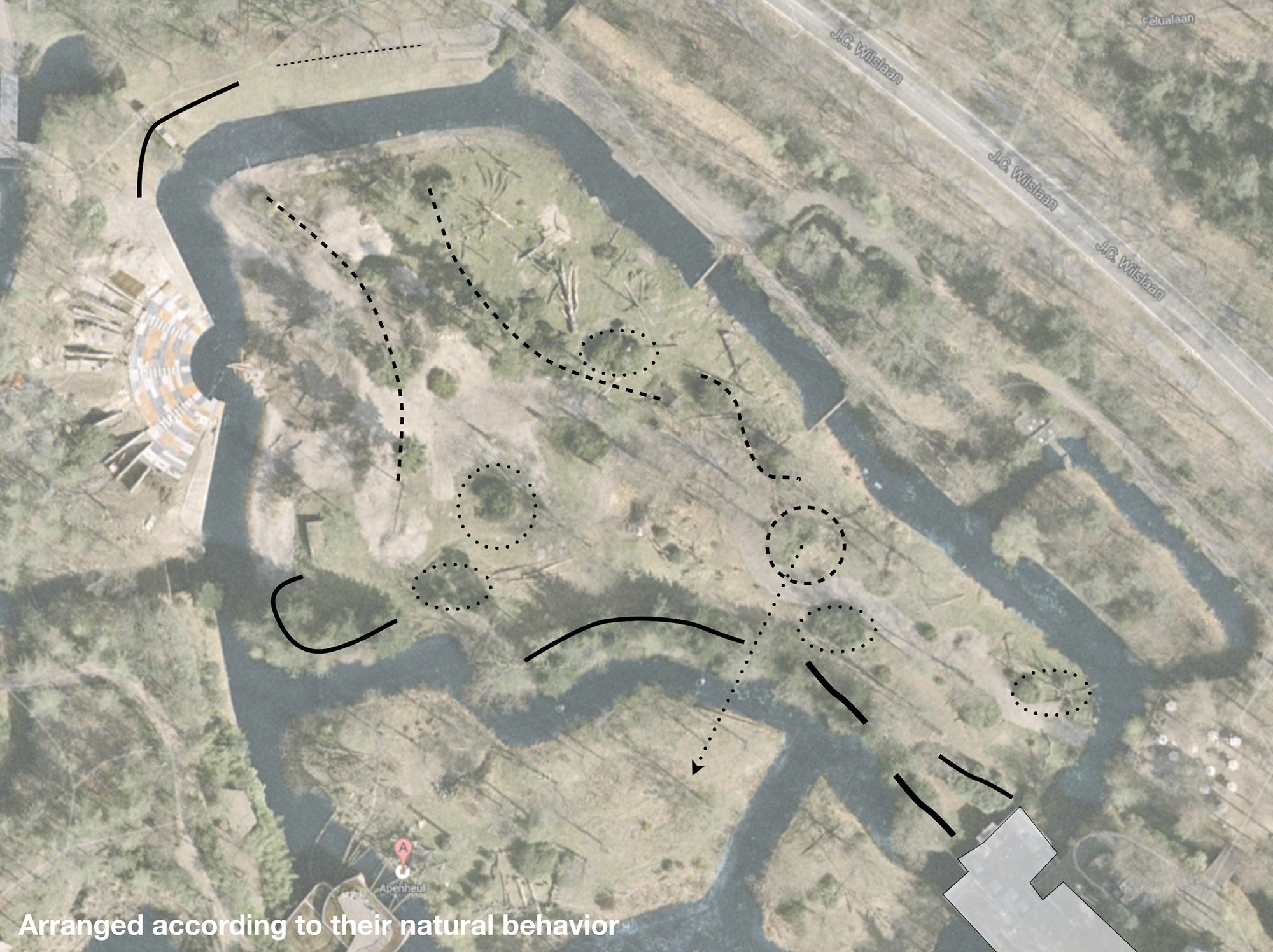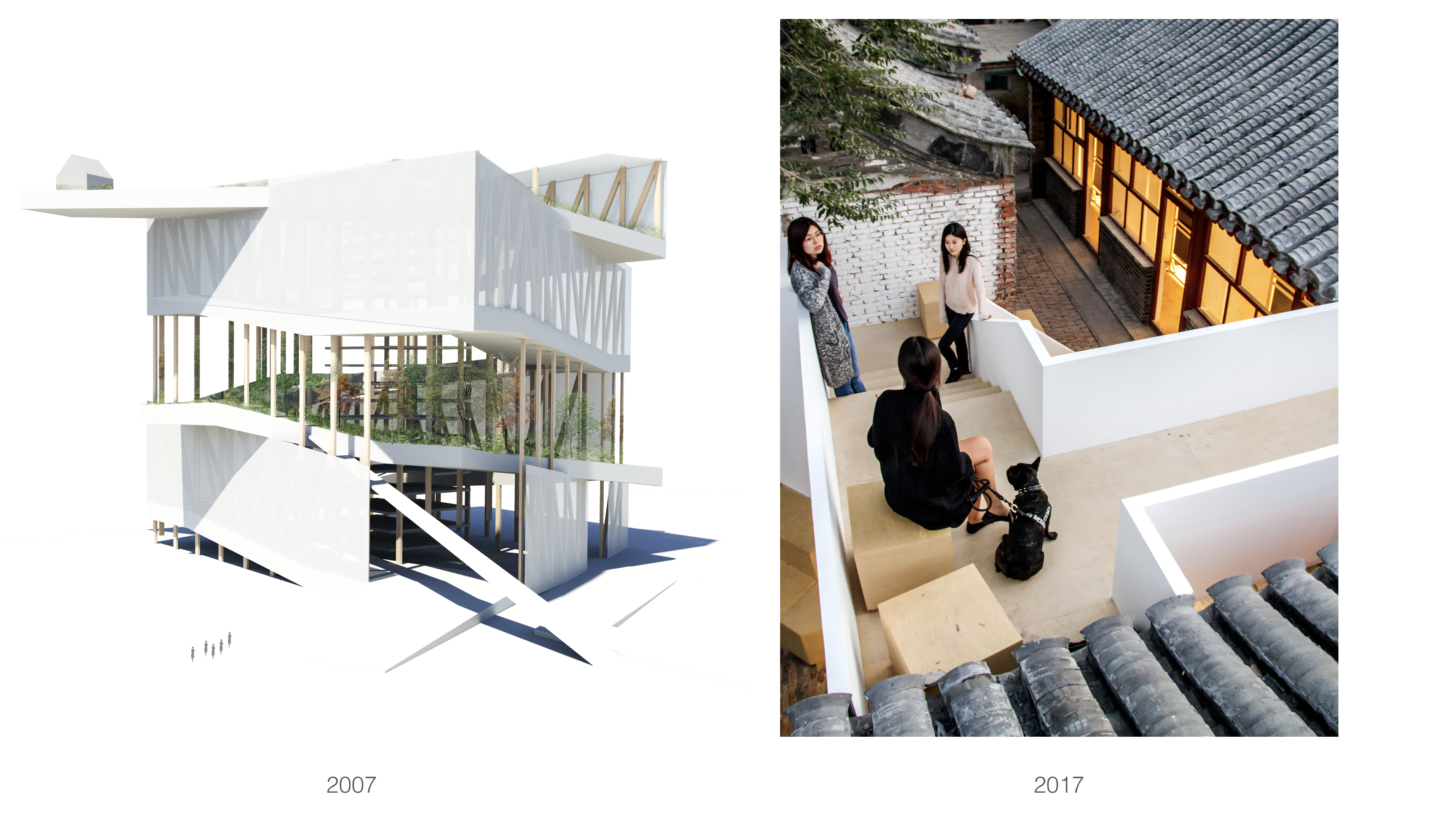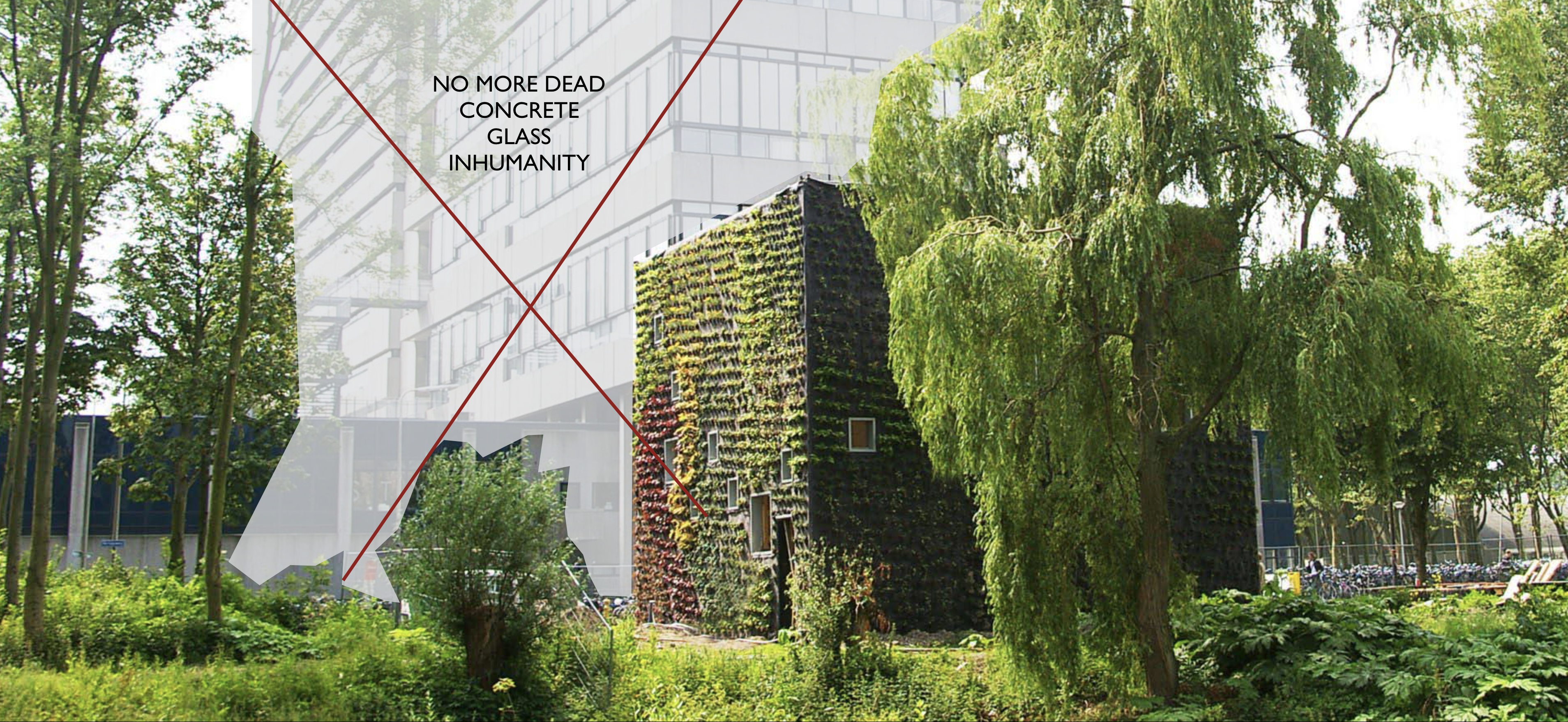This text is not so much about architecture, but more about what we can do as architects. It is a summary of a talk Martijn gave at the Kuala Lumpur Architecture Festival 2019 (KLAF2019)with an outline of how he sees to practice a path towards an alternative future. It mentions several lessons that he has learned along the way, and that can hopefully inspire others, like yourself, to also choose your path to an alternative future. The video below has the full talk integrally available.
Lesson 1: The world is changing.
The girl that changed my life And what I loved about the place I worked was that it was not a typical zoo; this zoo had no cages, no bars, no glass walls or divisions. Instead it was a man-made park in which people shared the natural environment with other primates and could observe their natural behavior. With this approach, recent studies have shown that over 90% of the zoo’s visitors say they have a greater appreciation for nature after their visit. And I believe that from there they can start to understand that it’s worthwhile protecting the world we share. Most of the animals in the zoo walk freely amongst the visitors, but the larger animals, such as the gorillas are kept on an island with a small moat water around. The gorilla island measures about 10,000m2, and it is designed with several elements that loosely define places and create different type of boundaries, see Figure 1. Some of which you could see through, some that only smaller individuals could go through, some for shelter, some for play, etc. And then I found that in the human world Homo Sapiens functioned in much the same way. I found this very promising: if you know about the beings that you design for, if you know about their behavior you can make a place that looks like a home for them. Years later when working with Herman Hertzberger for instance who designed schools along the same principles. You can see in Figure 2 that the little girls in the front can communicate with the girl in the classroom, but if that girl goes behind the wall she can’t see them anymore and feels more private. The teacher, however, who is taller, can still see them through the window. And you can see in the adjacent image that it’s the same for the gorillas at my zoo. Very promising indeed. Since this article is about “making you realize how to change the world according to how you want it to be.”, this was my the first lesson: this better world starts from your own view of the world. So I thought what I could do about this, and I realized I could make places for people to enjoy, to feel at home, like the animals at my zoo. So I thought I should study architecture and went to study architecture at TU Delft. It was hard. Beijing in 2010 was polluted, congested, and I couldn’t speak the language. But I thought well, if Beijing is like this, surely I can do something there. And as I started with simple steps to choose the life that I believed in. So I came to Beijing and I saw all the cars and saw the pollution and I started with choosing to cycle. And I also tried to learn again. I learned about China under my new mentor Li Xiaodong. He told me for instance about a library in Ningbo, which I found to be the second oldest private library in the world. It’s called Tianyi Ge/ 天一阁. It was an incredible library; there were no books! Instead, there were only trees, and some little houses. Rather than a temple for books, I found that this library was meant to recreate an environment which is good for study. An environment in which one can relax, can focus, can study, can talk with each other. You can be away from the busy, chaotic world around you. And I learnt that in traditional China people and buildings were a part of nature. And to study was to be in nature. That was the type of Future Habitat I had imagined! Tsinghua University – Graduate Lab
You have to be honest with yourself about the things you do, Han supports and reminds me everyday to reflect on who I am, and what I do. Is it really what you believe in? Or is that only what you demand from others to do, or what others demand of you? And you have to realize that these small changes can have a big effect. Gyasi taught me to be respectful of the world that we inhabit and be respectful to the others around you. Gorillas are amazing creatures; they’re not aggressive, they are vegetarians. And what I learnt most from them is that they don’t do things for their own ego and for their own benefit. Their leader of their group for instance, is chosen to be the leader by the females in the group not because he is big or because he is handsome or because he is strong, but because the other gorillas trust that his decisions will be good for the group as a whole. So I think if we can make sure that what we do is not only to satisfy our egos, but is good for the cause of all the people around us, and for the world at large, we surely can make a better world. I’m committed to better myself in this journey and we’re very honored to be working with my zoo now to communicate this message with the first phase of a their park re-design, see here for the full project details, opening in March 2020. Thank you very much.
As such, my first step toward an alternative future was try and be part of this changing future, as a post-western architect, and to engage in long term studies through a mentorship under Chinese master architect Li Xiaodong / 李晓东. And these changes became the constituents of the practice I co-founded with my wife Han Zhang in 2015: maison h / 汉荷设计. We are a team that reflects the contemporary social cultural change. It’s not a name-sake practice, we are equal partners, female and male. We are based in China, and we see architecture as a means not as a goal. We start from our environmental responsibilities. We observe people’s needs and behavior. We see creativity as the process, and buildings as community catalysts; we make places for people. We do this through teamwork, trust and collaboration. This does not come naturally.
Inspired and supported by many great individuals along this path of discovery, there was one girl I met early on in my life that initiated a change away from the privileged self-centered architecture I was being trained in. I met her in my hometown, Apeldoorn in the Netherlands, when I was still in high school. Her name was Gyasi. In her native Swahili language this means ‘wonderful child’. Gyasi is a gorilla; and we met at the day she was born at the Zoo I was working, where my job was to take care of her. And I watched her grow and explore the world around her over the six years I worked there. I observed in her how as a child, we learn, we play and we get to know the world around us.
Lesson 2: Time to think
However, the building where I had to study in, was yet another concrete box, far away from my ideal Homo Sapiens habitat, see Figure 4. However, at the start of my second year of studying architecture, there was an open competition to design a building on the campus, right in front of the school. So I designed a small planted cube in front of this concrete prison, together with my flat mate, Philip Mannaerts. It was an architectural alternative to the prevailing dead, concrete, glass, inhumane capsules that were separating us from the outside world. I believed we needed something that is alive; something that changes, that breathes, that gives back to the city. The site was perfect for a strong statement like this. The feature image above shows the contrast between our building which is alive and changing, and the architecture school behind, which is concrete and dead. We developed a facade made out of recycled clothes that just used the nutrient rich water from a nearby dilapidated pond. The decaying pond thus formed the base of life for our plants, and the living building formed a catalyst filter for life in the pond; taking harmful nutrients out, and putting filtered water back in. After several months both the building and the pond were thriving. It was a fully sustainable building; with a construction of sustainably sourced wood, the largest prefab wooden elements of Europe at the time; a green, filtering façade of recycled clothing and so on; the first of its kind in the world. See this link for the full project description.
At that time of making this small project in Delft I was just following my intuition, surrounded by some people that really believed in the story and I didn’t really know what it meant at the time. However, seeing the overwhelming response after winning the competition and realizing the project, with hundreds of people involved, and having it published in leading magazines around the world, I started to reflect on the underlying relevance of the project. In the mean time I had completed my studies in Delft, went to work for pioneering ecological architects Behnisch Architects in Los Angeles, and after returning to the Netherlands in late 2008 I started compiling these thoughts in an architectural manifest, a start towards an alternative future, which I titled ‘Towards A Future Habitat’. A direct reference to the failed modernist architectural manifest that is behind all the contemporary concrete prisons, as advocated by Le Corbusier in his ‘Towards an Architecture’, see the image below.
Lesson 3: Choose to live the life you believe in
However, again, the real world in China didn’t look like that. At Tsinghua University, which is supposed to be the best university in China, I found again a concrete prison like the one I studied at in Delft. It didn’t feel like a comfortable learning environment; instead there were teachers preaching to cohorts of students. It was inspired by a Soviet ideology of making buildings; making everything standardized, simple, bare. But in my mind, that was not a good learning environment. It was not the Homo Sapiens Habitat I had imagined. Fortunately, another competition; open to all faculty in the school, again a small project, a renovation of part of the school this time. So we proposed to get rid of all the standardization and classrooms. We were going to make it open, free, flexible. And instead we put something in the middle that could function like a comfortable home base. Something that you can climb on, you can go underneath, you can sit together, you can talk together, see here for the full project. Looking at education as a way that you can explore by yourself; that you can define who you want to talk to, when you want to talk to them, that you can define your own place as you require it at that moment. Just like Gyasi on her island.
Lesson 4: Help other people live this life

Lesson 5: Teach others

Conclusion: tomorrow is you
